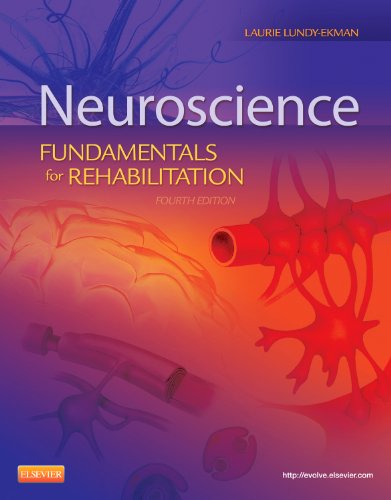Test Bank For Neuroscience Fundamentals Rehabilitation 4th Edition Lundy Ekman
Digital item No Waiting Time Instant DownloadISBN-10: 1455706434, ISBN-13: 9781455706433Publisher : Saunders; 4th editionAuthor: Laurie Lundy-Ekman PhD PT
In Stock
Original price was: $55.00.$22.00Current price is: $22.00.
Test Bank For Neuroscience Fundamentals Rehabilitation 4th Edition Lundy Ekman
Table of Contents
Test Bank for Neuroscience: Fundamentals for Rehabilitation, 4th Edition by Laurie Lundy-Ekman
The “Test Bank for Neuroscience: Fundamentals for Rehabilitation, 4th Edition” by Laurie Lundy-Ekman is an essential educational resource designed to support educators and students in mastering the principles and applications of neuroscience in the context of rehabilitation. This comprehensive test bank complements the textbook by offering a diverse array of questions that assess and reinforce understanding of key neuroscience concepts, making it an invaluable tool for both teaching and learning. Below is a detailed overview of the components and benefits of this test bank:
Overview of Test Bank Content
- Chapter-by-Chapter Organization
- The test bank is meticulously organized to align with each chapter of the textbook. This ensures comprehensive coverage of all critical topics, facilitating easy integration into the curriculum and enabling targeted assessments.
- Types of Questions
- Multiple-Choice Questions (MCQs): These questions cover a broad spectrum of knowledge, from basic recall to complex application and critical thinking. Each question includes well-crafted distractors to challenge students’ understanding.
- True/False Questions: These questions evaluate students’ ability to differentiate between correct and incorrect statements, reinforcing factual knowledge and addressing common misconceptions.
- Fill-in-the-Blank Questions: These questions focus on recalling specific details such as key terms, neurological processes, and important concepts, testing students’ memory and understanding.
- Short Answer Questions: These questions require detailed yet concise responses, evaluating students’ ability to explain neuroscience concepts clearly and accurately.
- Essay Questions: These questions assess students’ ability to synthesize and articulate complex ideas, demonstrating a deep understanding of neuroscience principles and their applications in rehabilitation.
- Case Studies and Scenarios: Real-world scenarios and case studies help students apply theoretical knowledge to practical situations, enhancing their critical thinking and problem-solving skills.
- Difficulty Levels
- Questions are categorized by difficulty to provide a range of challenges and assess students’ proficiency at different levels, including:
- Basic: Testing foundational knowledge and comprehension.
- Intermediate: Requiring application of knowledge to practical neuroscience scenarios.
- Advanced: Involving critical thinking, analysis, and synthesis of complex neuroscience information.
- Questions are categorized by difficulty to provide a range of challenges and assess students’ proficiency at different levels, including:
- Core Focus Areas
- Introduction to Neuroscience: Questions covering the basic principles and scope of neuroscience, including the history and significance of the field in rehabilitation.
- Neuroanatomy: Detailed coverage of the structure and function of the nervous system, including the central and peripheral nervous systems.
- Neurophysiology: Assessing knowledge of the physiological processes underlying neural function, including synaptic transmission and neural communication.
- Sensory and Motor Systems: Focus on the organization and function of sensory and motor systems, including pathways and mechanisms of sensory perception and motor control.
- Neuroplasticity: Examining the principles of neuroplasticity and its implications for rehabilitation, including mechanisms of neural adaptation and recovery.
- Cognitive and Behavioral Neuroscience: Questions on the neural basis of cognitive functions and behavior, including learning, memory, and emotional regulation.
- Clinical Neuroscience: Coverage of neurological disorders and their impact on function, including stroke, traumatic brain injury, spinal cord injury, and neurodegenerative diseases.
- Assessment and Evaluation: Assessing understanding of neurological assessment techniques and tools used in clinical practice.
- Therapeutic Interventions: Focus on evidence-based therapeutic interventions for neurological rehabilitation, including physical, occupational, and speech therapies.
- Ethical and Legal Considerations: Questions on ethical and legal issues in neuroscience research and clinical practice.
- Alignment with Learning Objectives
- Each question in the test bank is aligned with the learning objectives outlined in the textbook, ensuring that assessments are relevant and targeted towards achieving the intended educational outcomes. This alignment helps in accurately measuring students’ progress and comprehension.
- Educational Support and Utility
- For educators, the test bank provides a comprehensive resource for creating quizzes, exams, and other assessments. It simplifies the process of test creation and ensures consistency and alignment with the curriculum.
- For students, the test bank serves as a valuable tool for self-assessment and study, helping them identify areas of strength and weakness and focus their efforts on areas needing improvement.
Benefits of Using the Test Bank
- Enhanced Learning and Retention
- The diverse range of question types and difficulty levels helps reinforce learning through varied and repeated exposure to key concepts, enhancing retention and understanding.
- Preparation for Real-World Applications
- By focusing on real-world scenarios and practical applications, the test bank prepares students for the practical aspects of neuroscience in rehabilitation, ensuring they are ready to apply their knowledge in clinical settings.
- Comprehensive Assessment
- The test bank allows for thorough and multi-faceted evaluation of students’ knowledge and skills, from basic understanding to advanced application, ensuring a well-rounded educational experience.
- Efficient Teaching Resource
- For educators, the test bank simplifies the process of creating assessments, providing a consistent and reliable tool for evaluating students’ progress and readiness for advanced studies in neuroscience and rehabilitation.
Conclusion
The “Test Bank for Neuroscience: Fundamentals for Rehabilitation, 4th Edition” by Laurie Lundy-Ekman is an essential resource for neuroscience and rehabilitation education. It provides structured, comprehensive, and versatile tools for assessing and enhancing students’ knowledge and skills in neuroscience. By aligning closely with the textbook and emphasizing real-world application, the test bank supports the development of competent, confident professionals ready to excel in their understanding and application of neuroscience principles in various healthcare and rehabilitation settings.


Reviews
There are no reviews yet.